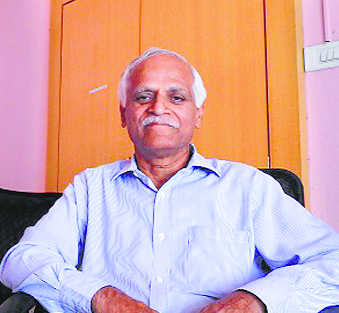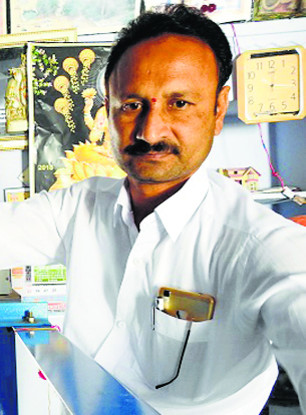

Suresh Dharur in Hyderabad
Retired Brigadier P Ganesham is on a unique mission. He travels to villages, identifies the rural innovators, nurtures their ideas and presents them to the world. ‘Palle Srujana’ (rural creativity), a Hyderabad-based voluntary organisation set up by the septuagenarian ex-serviceman and other like-minded individuals, is engaged in spotting the rural talent, aiding and promoting creativity at the grassroots level in the two Telugu states of Telangana and Andhra Pradesh. So far, they have identified more than 210 innovators across the two states, besides documenting close to 2,500 traditional practices.Among these, 13 innovators have won the Rashtrapati Award, and two have won the Padma Shri. The organisation has also helped 24 innovators patent their devices.”The innovators have collectively generated a turnover of close to Rs 4 crore, impacting more than Rs 5 lakh families,” says the retired Brigadier. The idea of Palle Srujana is that rural innovators leverage knowledge derived from nature for their livelihood. There is abundant creativity in villages to find solutions which are simple, affordable, sustainable and user-friendly.”It has been a great learning experience for me. In the last 12 years that I have been visiting the villages, I have always amazed at the level of talent and innovative spirit that exists in our rural areas,” he says. A group of Palle Srujana volunteers, comprising 20-40 people, undertake what they call ‘Shodh Yatra’ that would see them crisscrossing the villages and interacting with locals to identify the rural talent.Ch Mallesham, a school drop-out from a poor weaver family in Andhra Pradesh who figured in the Forbe’s list of seven most powerful rural Indian entrepreneurs, is among the innovators whose unique work has been brought to light by Palle Srujuna volunteers. He is inventor of Laxmi Asu Machine which automates the weaving process and dispenses with the strenuous movement of hands and legs.The humble machine, which Forbes said “ignited a revolution” in India’s weaving community, proved to be a boon for the weaving community in the backward Nalgonda district, famous for Pochampally silk sarees.Mallesham’s machine can make six saris worth of material in one day, and no human effort is required beyond placing thread on the machine and removing the material after the process is complete. It saves time and relieves stress. Domestic power supply is sufficient to run the 0.25 HP motor attached to the machine.The use of Asu machine has significantly improved the productivity and marketability of Pochampally silk sarees. Mallesham received Padma Shri last year. “This machine brought a ray of hope to the weavers and provided livelihood to many,” says Brig Ganesham. Another innovator Pandu Ranga Rao (33), who studied up to tenth standard, developed a natural air sealant for motorcycle and auto-rickshaw tyres which can resist punctures without damaging the tubes. The novelty of this sealant is that it is prepared using natural products and works equally good in summers and winters. He received a special innovation award from former President Pranab Mukherjee.”We have conducted 26 Shodh Yatras so far. We document rural knowledge, explain intellectual property rights and the importance of consent to them before patenting their device and showcasing it in exhibitions,” says Brig Ganesham.Ganesham, an engineering graduate, served in the Army for 35 years. He was awarded the Vishisht Seva Medal (VSM) by the President in 2005, before he retired in 2006.”As most of the Grassroots innovations are being developed with locally available raw materials, they are mostly not in a marketable state. In addition, most of the grassroots innovators solve their problems through their creativity and do not intend to sell them. Based on the readiness of the innovation, and the innovator, each innovation at Palle Srujana is categorized into three: Ready For Sale (RFS), Ready For Entrepreneur (RFE), and Ready For Prototyping (RFP),” explains Brig Ganesham.
